In Probe for EPMA it is easy to acquire BSE, SE, CL, etc. images and also acquire manual or automated point analyses. It is also easy to acquire a BSE, SE, CL, etc image and use the mouse to select point analysis positions on the image as seen here by utilizing the Digitize Image feature accessible from the Digitize window from the Automate! window:
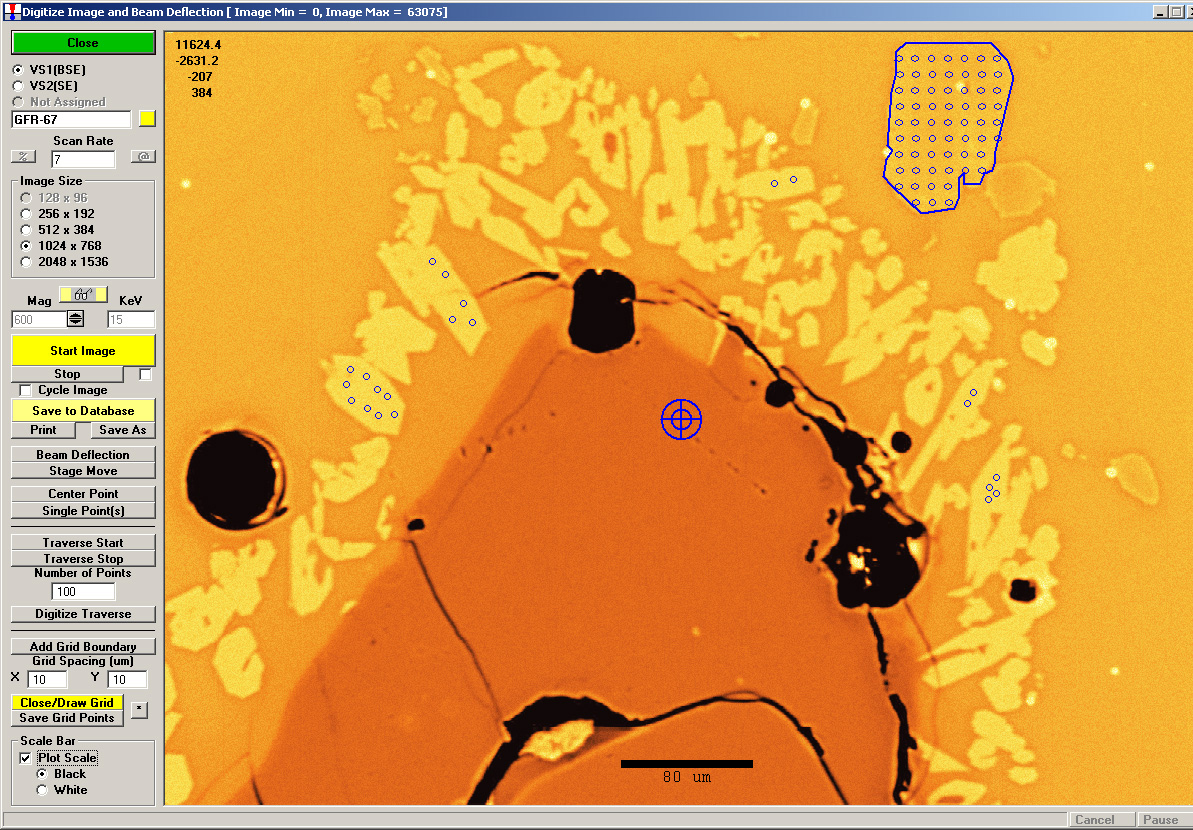
This allows us to easily overlay our point analyses accurately over our analog signal image (BSE, SE, CL, etc) with just a mouse click using the Plot Stage Positions | All Positions option as seen here outlined in red:
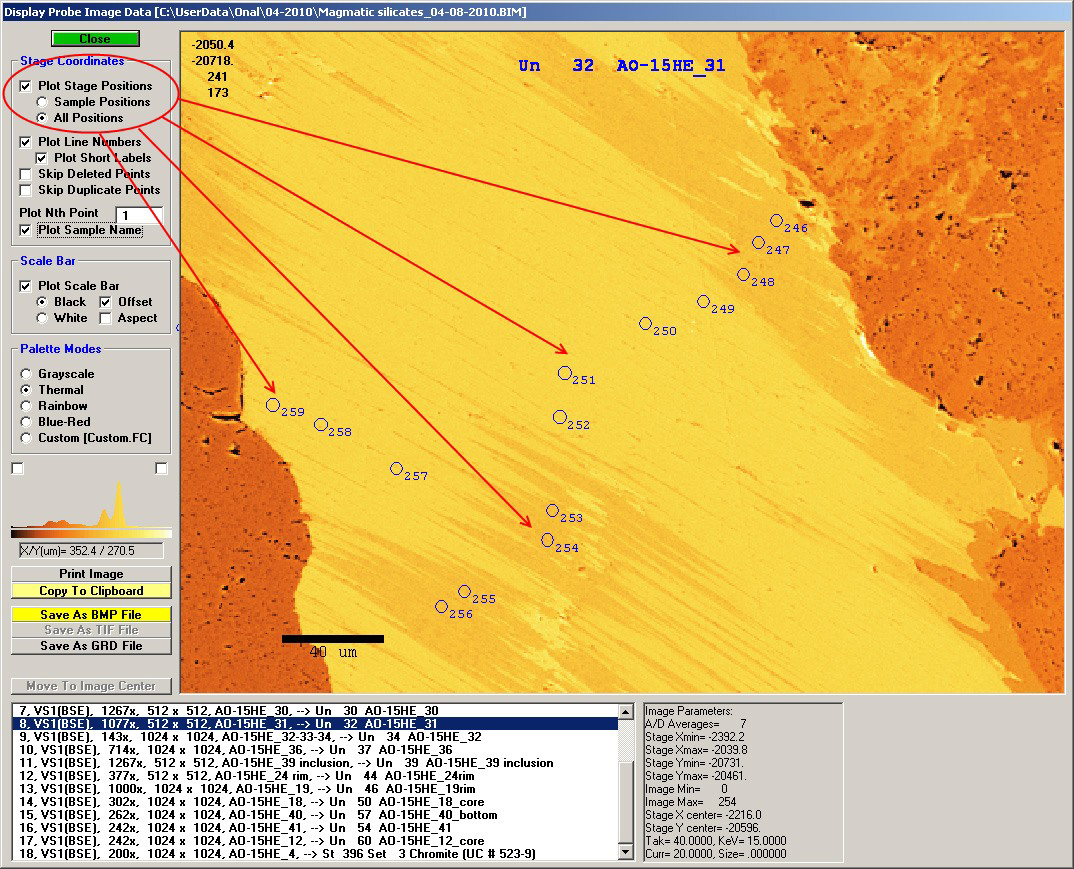
So while one can display any analysis positions within the field of view of any image, sometimes we want to only display the analysis positions of a specific sample as seen here:
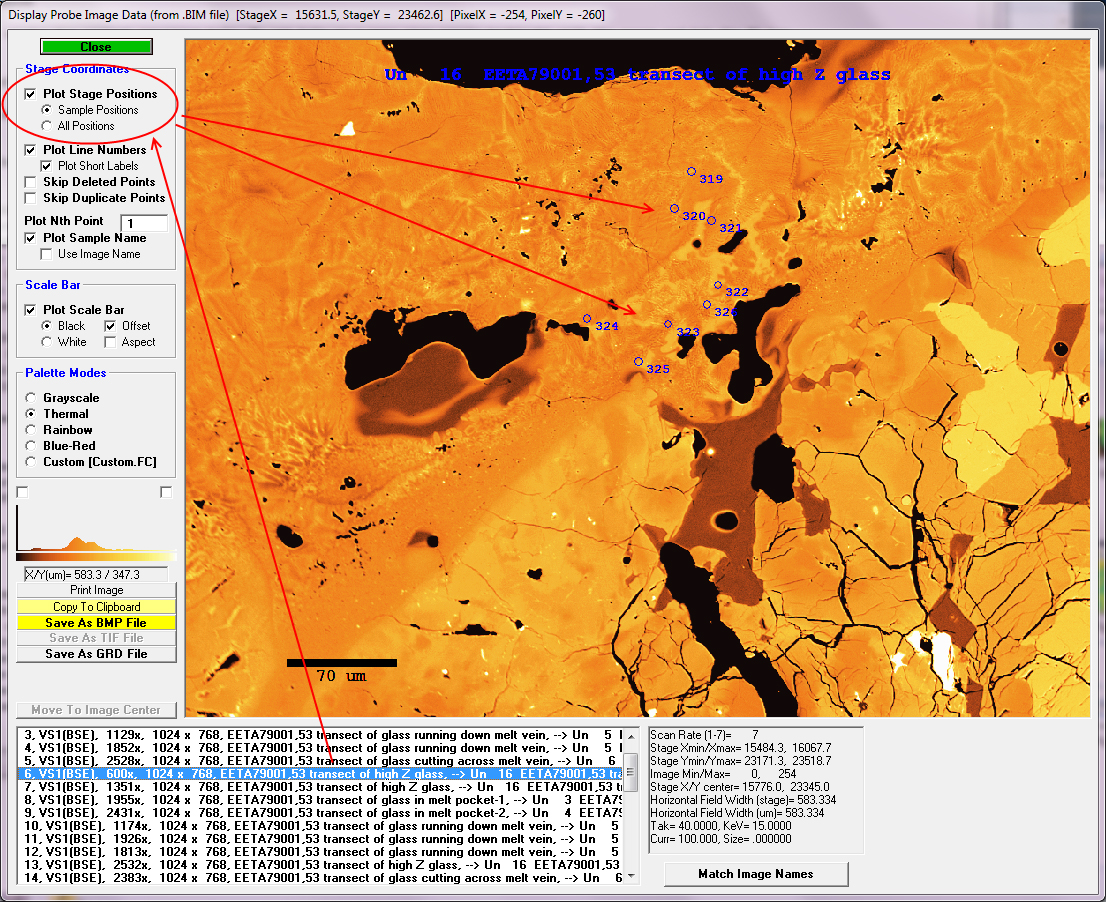
The easiest way to accomplish this is to enter the same name for the image and the sample as we acquire images and specify point analysis positions regardless of whether the images are acquires manually, automatically or using the Digitize Image feature as described above as as seen here:
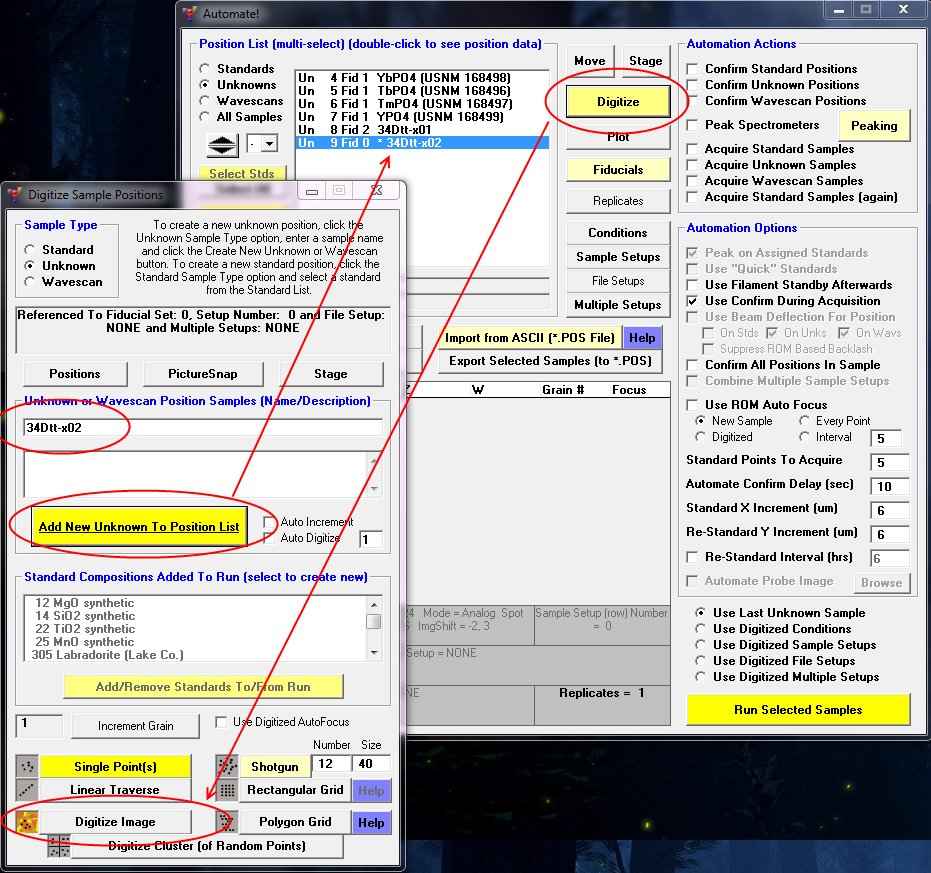
Once the point analyses have all been acquired manually or automatically, we can go to the Run | Display, Annotate and Export Analog Signal Images menu and click the Match Sample Names button as seen here:

The program will search through the probe run and locate any samples that match the image names and specify a "pointer" (the --> arrow in the image description) that indicates the point analyses that correspond to the image.
Now the Plot Stage Positions | Sample Positions option will display only those point analyses that are contained in the specified sample.
In addition, it should be noted that one can also "point to" any sample (and edit other fields) by simply double-clicking the image list item as seen here:
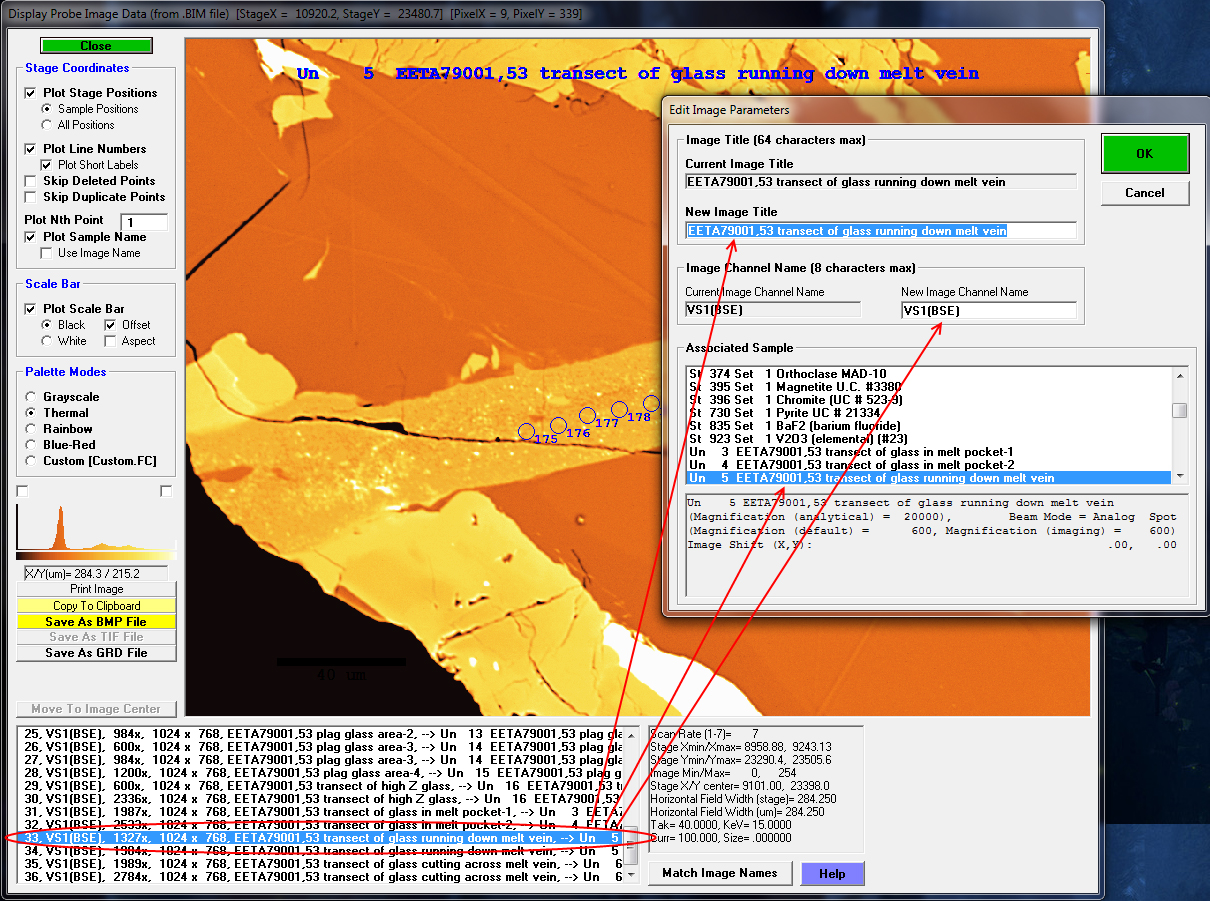
If you have any questions regarding this cool feature, please post them here.